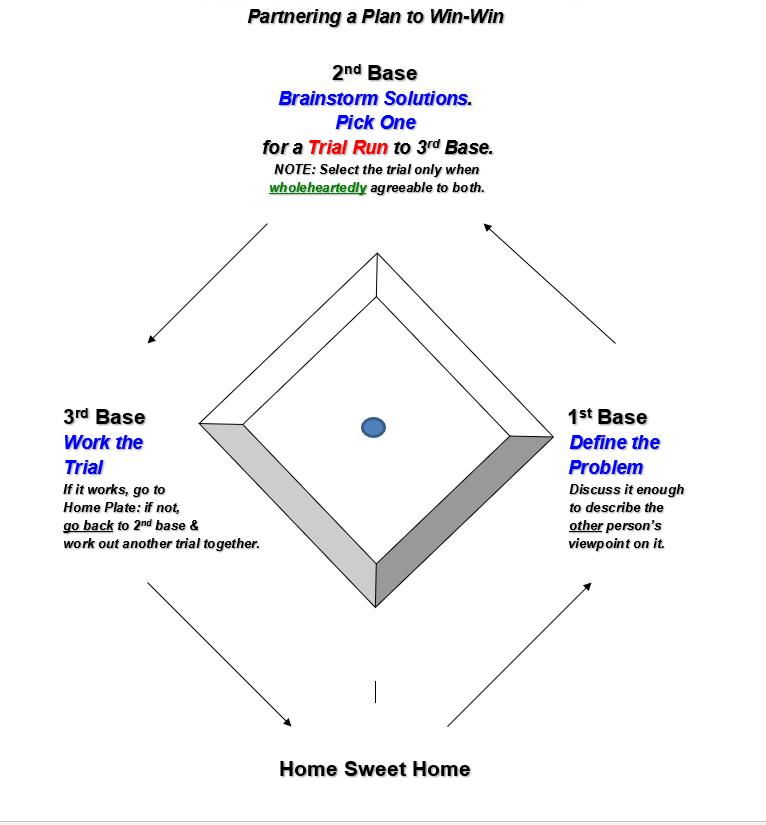Life often throws problems at you that affect not only you, but also your loved one. When the problem comes from the other person, or from somewhere outside of both of you, it is tempting to leave the solution to somebody else. However, a better rule of thumb is to think this: If it affects both of us, then it’s better for both of us to solve it together.

Using a baseball diamond and some of the rules of the game, you can map out some stages that will help you far more effectively work out solutions that will result in a Win-Win for both of you. Just like in the game of baseball, once you hit the ball, you must tag all 3 bases for your run across home base to count. In the ‘game’ of life, it is just as necessary to touch on all 3 bases to get to the scoring solution. These 3 bases are:
- Define the problem
- Brainstorm solutions
- Work a trial run.
Briefly, this is what a couple or you and a significant other can do to work out winning solutions.
- Get together to describe the problem as fully and carefully as you can for 1st base. Talk about it long enough, and listen to each other carefully enough, to finally be able to do this: tell your partner what the problem looks like to them. Keep doing this until each of you agrees on what the problem or problems are.
- Only then go to 2nd base. This is where each of you throws out different kinds of ideas on how the problem can be addressed. Try coming up with 5 to 10 different ways to solve it. Let the ideas go from silly to serious…this helps with creativity. Then spend some time selecting one of these ideas to try on a trial run. It is critical that both of you wholeheartedly endorse doing the trial to see if it works on its own merits. Without this open willingness, any setbacks and failures can backfire – with the reluctant person often blaming their partner for the lack of success.
- Plan a trial run of the proposed solution for 3rd base. Give it a reasonable time limit, and then give best effort to working the trial idea throughout that time. When the time limit is up, each person offers their honest evaluation on how well it worked. If it did not work completely well – no matter why – simply go back then to 2nd base and do another brainstorming session to try another idea.

When this model is followed openly and sincerely, it actually helps to bond the partnership better. It’s because of this: if the plans succeed, the pleasure reinforces the effort. If the plans don’t succeed, nobody is blamed personally; rather, only the method gets blamed. If it doesn’t work, the couple simply learns from the experience. Their attitude then becomes, ‘Sink or swim, we’re in this together, all the way.’

